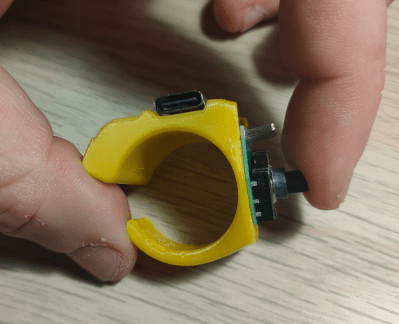Are you using a desk mouse like some kind of… normal computer user? Why, beg the heavens? For you could be using an air mouse, of your very own creation! [Misfit Maker] shows the way. Check out what he made in the video below.
An air mouse is a mouse you use in the air—which creates at least one major challenge. Since you’re not sliding along a surface, you can’t track the motion by mechanical friction like a ball mouse or by imaging as in an optical mouse. Instead, this build relies on a gyroscope sensor to track motion and translate that into pointer commands. The build relies on an ESP32-C3 as the microcontroller at the heart of things. It communicates with an MPU6050 gyroscope and accelerometer to track motion in space. It then communicates as a human interface device over Bluetooth, so you can use it with lots of different devices. The mouse buttons—plus media control buttons—are all capacitive touch-sensitive, thanks to an MPR121 touch sensor module.
There’s something neat about building your own tools to interface with the machines, almost like it helps meld the system to your whims. We see a lot of innovative mouse and HID projects around these parts.








![[rasteri] holding his HIDMan USB dongle](https://hackaday.com/wp-content/uploads/2024/11/retro-usb-1200.jpg?w=600&h=450)









